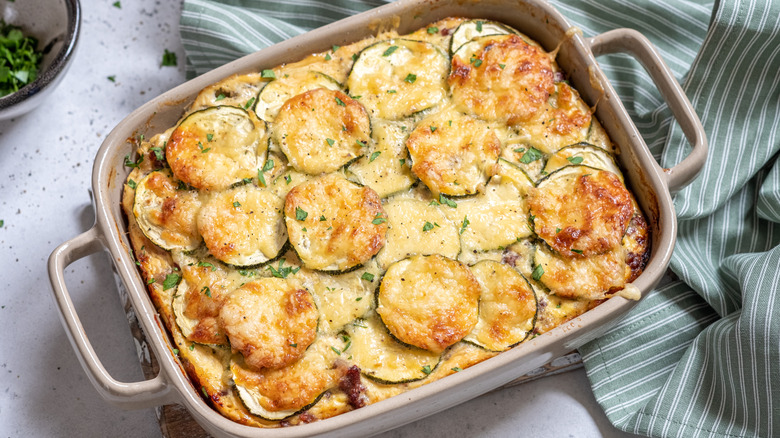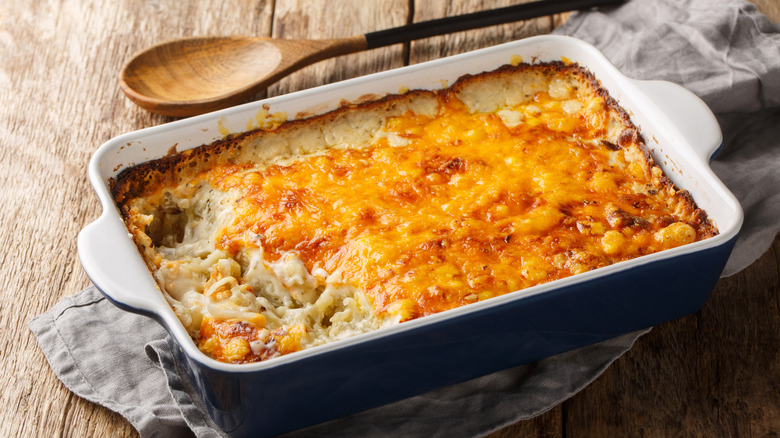How The First Casserole Compared To Modern-Day Versions
Dig into an old-school cheesy, creamy million-dollar chicken casserole, and the dish's charms feel long unchanged. Yet food's an ever-evolving cultural zeitgeist, and the history of casseroles is no exception. Nowadays, the food type draws associations to once-popular Depression era creations. Such dishes consist of a starchy base, flavored with a canned or frozen ingredient, filled with additional hearty components like some kind of dairy, and all slow-cooked in the oven.
Yet such a meal concept stretches much further back in time. The first casserole recipe may date back to the 13th century, and the word itself descends from the pre-medieval Greek word kuathion, which translates to "little cup." This, then, made its way to France as "casse," which means pan. In its most stripped-down essence, a casserole doesn't require pasta, nor a pre-packaged soup. Instead, the dish's foundation is all in a robust cooking vessel, composed of earthenware, cast iron, or — originally — clay. More so than the precise composition, the dish's magic arises from patient slow-cooking, dependably in the oven.
In the first published recipe, a casserole involved handmade noodles, mixed with aromatics, and stacked with cheese. Other slow-cooked creations of the time entailed meat wrapped in pastry, secured in a cloth, and heated in a cauldron. With no pre-packaged pasta or preset oven temperatures to rely on, original casserole creations proved substantially more labor-intensive than today's recipes. And in their absence of convenience lies a distinct contrast to modern renditions.
Casseroles substantially altered in composition amidst the 20th century
Through the Middle Ages into the 19th century, proto-casseroles proliferated as laborious, complex creations. However, these dishes weren't bound by a unifying word. The term casserole only emerged in 1706, first referring to a cooking vessel and only applied to the culinary creations themselves by the late 19th century. Nevertheless, the dish fit for the category proved abundant.
There's the centuries-old French cassoulet, crafted with duck confit, beans, and pork, in a wondrously time-consuming fashion. Meanwhile, medieval lasagna looks quite distinct from modern versions, but still developed in a casserole-like fashion, with careful layering and patient preparation. The dish even bore a resemblance to a slow-cooked pasta and cheese dish prepared by Thomas Jefferson in the late 18th century.
What we now call the modern casserole didn't emerge until the late 19th and early 20th century. Intertwining culinary diversity and commercialized convenience, this dish was reinvented as a purely American creation. Right at the tail end of the 19th century came Campbell's Soup, which gave rise to dishes with bases of things like Cream of Mushroom. Processed food production then picked up amidst tough times like the Great Depression. And further into the 20th century, the canned food trend also integrated protein sources like fish — laying the grounds for the beloved tuna casserole, while readymade ingredients like tater tots integrated into Midwest renditions. And so, the same centuries-old dish concept became viewed in a completely new light.


